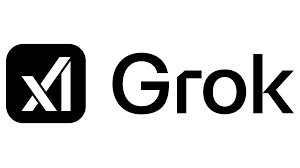
Introduction
This post is a complete guide to using AI for problem-solving. It is designed to help professionals and enthusiasts stay updated on the latest advancements in large language models (LLMs). In this guide, we feature six leading LLMs that excel in solving problems across different areas, including natural language processing, code generation, learning from fewer examples, and scalability.
Although no single AI model can solve every problem, this carefully curated list offers valuable insights for businesses and researchers. By choosing the right tool, organizations can leverage cutting-edge technology to improve efficiency and streamline operations.
1. OpenAI GPT-4.5: A Generalist Powerhouse

OpenAI’s GPT-4.5 is the latest addition to the GPT series. It is widely recognized for its ability to handle conversational AI and general-purpose reasoning. While it might not specialize in solving complex multi-step problems, it still performs well in pattern recognition, conversational fluency, and multimodal tasks (text, images, and audio).
Key Highlights:
- Scalability: It can handle large amounts of data without difficulty.
- Multimodal Processing: It works seamlessly with text, images, and audio.
- Applications: This model is ideal for businesses looking for conversational AI, fast computation, and multi-step reasoning—especially for those with flexible budgets.
However, GPT-4.5 is proprietary, meaning businesses need a subscription for full access. To make testing easier, platforms like Shakudo simplify the process of deploying GPT-4.5 without requiring heavy technical resources.
2. DeepSeek R1: The Reasoning Specialist

DeepSeek’s R1 model, built as a 671B-parameter Mixture-of-Experts (MoE) model, is revolutionizing the AI landscape. It focuses on complex reasoning, making it highly effective for STEM-focused tasks like advanced mathematics, logic, and scientific simulations.
Why It Stands Out:
- Reinforcement Learning for Reasoning: It handles long-form content and multi-step logical problems with accuracy.
- Cost-Efficiency: It is 30 times more cost-effective compared to competitors like OpenAI’s O1.
- Enterprise-Ready: This model can securely integrate with proprietary data, producing tailored, context-aware outputs.
For organizations seeking a seamless way to adopt this advanced model, Shakudo simplifies deployment and removes the need for extensive in-house resources.
3. Grok 3: Real-Time Problem-Solver

Grok AI, developed by Elon Musk’s xAI, combines conversational AI with advanced reasoning and real-time internet search. The latest version, Grok 3, takes advantage of massive computational resources. It introduces innovative features like “Think” and “Big Brain” modes, which are especially helpful for solving STEM-related problems.
Key Features:
- DeepSearch: Scans the internet in real time to provide detailed answers and summaries.
- Advanced Reasoning: Breaks down complex problems into manageable steps for more accurate results.
- Dynamic Applications: Suitable for industries that need fast data analysis, coding assistance, or real-time trend monitoring.
.
4. Llama 4 Behemoth: Meta’s Giant Teacher Model


Meta’s Llama 4 Behemoth is a massive model currently in development. It is designed as a teacher model, meaning it helps create smaller, more efficient AI models like Scout and Maverick. While it is not yet available for direct use, Llama 4 Behemoth focuses on multi-step reasoning, coding, and multilingual tasks.
Innovations:
- Dynamic Training: It uses advanced training methods like asynchronous reinforcement learning to improve reasoning capabilities.
- Distillation Powerhouse: This model helps develop smaller, more efficient AI systems for a variety of applications.
Although still in training, Llama 4 Behemoth sets the stage for groundbreaking advancements in reasoning-focused AI.
5. Claude 3.7 Sonnet: Deliberate Reasoning in Action

Anthropic’s Claude 3.7 Sonnet introduces an innovative feature called “extended thinking mode,” which enhances its problem-solving accuracy. This model is particularly effective for coding and STEM tasks that require step-by-step logical reasoning.
Why It Excels:
- Self-Reflection Loops: It evaluates different reasoning paths to find the most accurate solution.
- Enhanced Coding Skills: It is well-suited for software engineering tasks like front-end development.
- Business Applications: This model is ideal for industries focused on customer support, knowledge management, and automation.
6. Gemini 2.5: Multimodal STEM Expertise

Google’s Gemini 2.5 is built for solving complex problems across text, images, and code. With a massive 1-million-token context window, it is perfect for handling large datasets and delivering detailed analyses.
Advanced Features:
- Coding Prowess: It can create functional applications and games from a single prompt.
- Self-Fact-Checking: This feature ensures reliable and accurate outputs.
- Security Considerations: Businesses handling sensitive data should review compliance measures to ensure privacy and security.
For those seeking an open-source option, Google’s Gemma 3 offers similar capabilities with a 128,000-token context window, making it a practical choice for many users.


